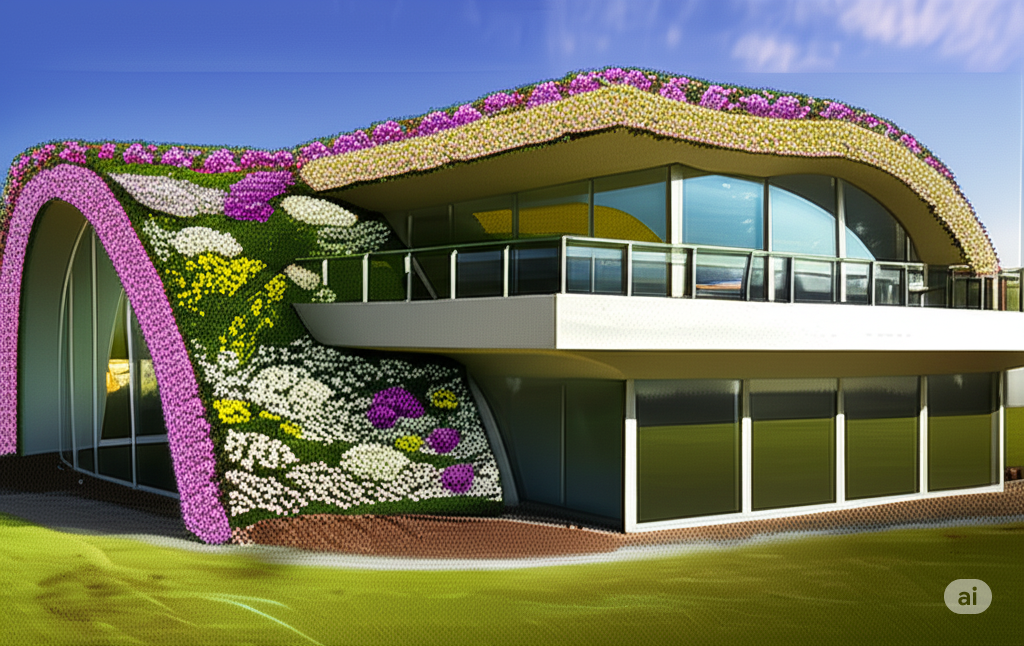
Community-Grown Solutions
-
Each Eco Nest Community features vertical aquaponics systems combining fish cultivation with organic farming. This closed-loop ecosystem delivers fresh food to residents via subscription services while creating local employment opportunities.
-
This integrated approach tackles food desert challenges by bringing vertical farming directly into underserved communities. By maximizing urban space efficiency and reducing transportation distances, we deliver fresher, more affordable produce while strengthening local food security.
-
Our controlled vertical systems ensure weather-independent, year-round production, enabling communities to achieve food self-sufficiency while creating local employment opportunities. Residents gain dependable access to fresh, locally grown produce and fish, fostering economic growth and environmental stewardship for stronger, more resilient communities.
Environmental Benefits
-
Green roofs absorb and store heat, lowering roof surface temperatures and the surrounding air temperature, thus mitigating the urban heat island effect.
-
Green roofs can absorb pollutants, reduce greenhouse gas emissions, and filter the air.
-
According to the EPA, they can absorb rainwater, reduce stormwater runoff, and mitigate flooding.
-
Green roofs can absorb and store carbon dioxide, helping to reduce greenhouse gas emissions.
Green Initiatives
-
An extensive green roof is a natural roof covering using low-maintenance, drought-resistant plants that are self-regenerating, short-growing, and designed to withstand extreme weather conditions.
Plant Selection: The plants selected should require minimal moisture and demand little from the substrate in terms of nutrients. Regional variations and local climatic conditions must be considered when selecting plants.
Low-Maintenance Design. In general, irrigation systems are unnecessary for extensive installations, although irrigation may be required during the early stages to support germination and initial growth.
-
Sustainable Materials Made from recycled materials and natural resins, our customizable interior wall finishes create spaces from cozy to elegant. They can be painted, wallpapered, or finished with any desired material.
Environmental Integration blends with nature to minimize visual and construction impact on surrounding ecosystems, while withstanding all weather conditions and optimizing performance across all climate zones and seasons.
EcoNest homes feature water-saving appliances and smart fixtures—from low-flow showerheads to efficient toilets—that dramatically reduce water usage. Combined with our Tri-Eco energy system (solar, wind, and geothermal) connected to net metering, residents slash their utility bills by 90%.
-
Enable homeowners with solar panels or other renewable energy systems to receive credits on their electricity bills for the excess energy they generate and send back to the grid.
-
A federal tax credit covers 30% of qualifying energy-efficient home improvements (up to $1,200 annually) through 2032. Proposed HB2506 legislation would add $2,000 credits for energy-efficient homes and $4,000 for zero-energy-ready homes.
A Home That Pays You Back
-
Econet addresses water sustainability through a three-pronged approach: minimizing water usage, incorporating energy-efficient appliances, and utilizing water-saving fixture technologies.
-
Premium, durable materials require higher upfront costs but deliver long-term savings by reducing the frequency of repairs and replacements. This approach lowers ongoing maintenance expenses and extends asset lifespans.






